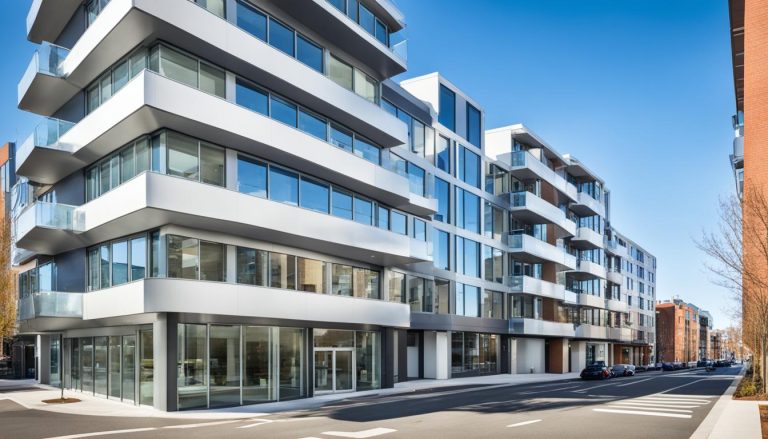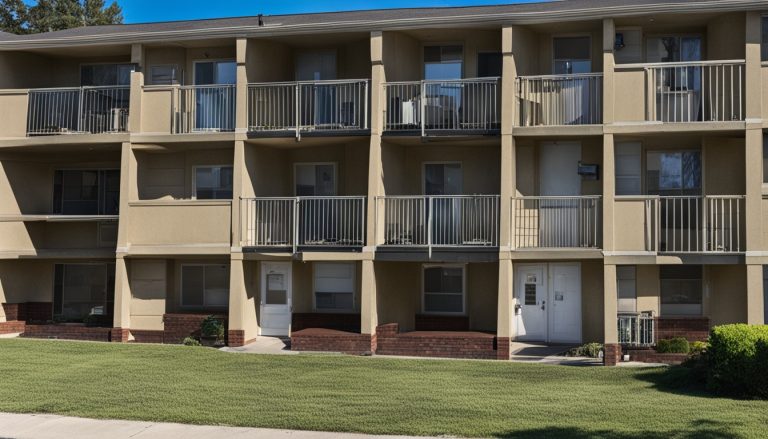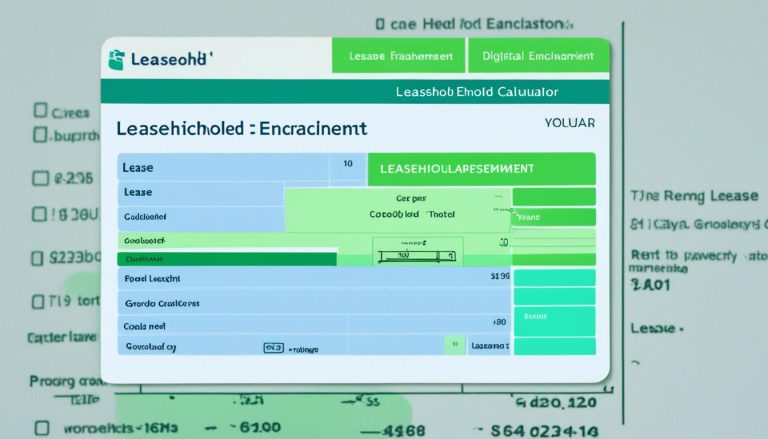Understanding the concept of a qualifying lease is essential for anyone involved in the property market, especially in the UK where leasehold properties are common.
Whether you are a property owner, tenant, or landlord, being aware of what constitutes a qualifying lease can significantly influence your legal rights, financial obligations, and long-term property security. This guide provides an in-depth look at qualifying leases and their implications for both property owners and tenants in the UK.
Understanding Leasehold and Qualifying Leases

In the UK, property ownership is broadly divided into two main categories: freehold and leasehold. Freeholders own the land and the property outright, while leaseholders own the property for a fixed period under a lease agreement with the freeholder.
A leasehold is essentially a long-term rental agreement, and the leaseholder has the right to live in or use the property for a specific number of years. But not all leases are treated equally under the law.
Enter the concept of a qualifying lease—a term that has gained prominence, especially with recent regulatory changes, like the Building Safety Act 2022.
So, what is a qualifying lease? A qualifying lease is typically a long-term lease, generally lasting for 21 years or more, that meets specific criteria laid out by the government.
These leases provide additional rights and protections to leaseholders, particularly regarding issues such as ground rent, service charges, and building safety regulations.
This distinction is vital for anyone living in or owning a leasehold property, as qualifying leases offer enhanced legal protections compared to standard leases. They ensure fair treatment for leaseholders, especially when it comes to disputes over charges or safety-related repairs in communal areas.
Key Features of a Qualifying Lease

A qualifying lease has several distinguishing features that set it apart from other types of lease agreements. Understanding these features can help you determine if your lease qualifies for additional protections under current laws.
1. Ground Rent and Service Charges
Ground rent refers to the annual fee that leaseholders pay to the freeholder for the land on which their property stands. Historically, ground rent was a nominal fee, but in recent years, some leaseholders have faced exorbitant increases in their ground rent, leading to widespread concern. This issue has been addressed in recent leasehold reforms, which aim to cap or abolish ground rent on new leases.
Service charges, on the other hand, cover the maintenance of shared spaces and facilities, such as communal gardens, lifts, or the exterior of the building.
Leaseholders under a qualifying lease are protected from unreasonable service charges, and they have the right to challenge excessive fees or poor-quality services provided by the landlord. This protection is particularly crucial for those living in blocks of flats or other multi-occupancy buildings.
2. Lease Duration
The duration of a lease plays a key role in determining whether it is considered a qualifying lease. A qualifying lease is typically defined as one that lasts for at least 21 years.
The length of the lease is crucial because it directly impacts the leaseholder’s rights and the value of the property. Long-term leases are generally more secure for both tenants and landlords, offering stability and clear terms of occupancy.
Who Qualifies as a Leaseholder?

Not all tenants with long-term leases are automatically considered qualifying leaseholders. Specific conditions, such as the nature of the property and the terms of the lease agreement, must be met.
For instance, the property must usually be a residential property, and the lease must contain clauses that outline the obligations related to ground rent and service charges.
Leaseholders of qualifying leases are often entitled to more favourable terms, particularly in light of the recent Building Safety Act, which introduces new protections for leaseholders in certain types of residential buildings, especially high-rise structures.
Legal Implications of a Qualifying Lease

Recent legal reforms in the UK property market have significantly altered the landscape for leaseholders and landlords alike. One of the most significant pieces of legislation affecting qualifying leases is the Building Safety Act 2022, which was introduced in response to concerns about the safety of residential buildings, particularly in the wake of the Grenfell Tower tragedy.
Building Safety Act 2022 and Its Impact
The Building Safety Act 2022 imposes stricter safety regulations on landlords and property developers to ensure that residential buildings meet modern safety standards.
This legislation is particularly relevant for leaseholders living in high-rise blocks or buildings with cladding issues. Under the Act, landlords must now take greater responsibility for ensuring that their properties are safe and free from hazards that could endanger the occupants.
One of the key elements of this Act is the protection it offers to qualifying leaseholders. In many cases, leaseholders have been hit with large bills for remedial work to bring buildings up to code—especially in situations where cladding needed to be replaced to meet fire safety regulations.
The Building Safety Act offers some financial protections to qualifying leaseholders, ensuring that they are not unfairly burdened with the costs of necessary safety repairs.
Landlord Obligations
Landlords with qualifying leaseholders are now required to comply with more stringent obligations. These include ensuring that buildings meet fire safety standards, providing transparency in the collection of service charges, and disclosing any major planned works that may affect the property. Failure to meet these obligations can result in legal consequences for landlords, including fines and the possibility of forfeiting the lease.
For leaseholders, these reforms mean greater peace of mind, knowing that their landlords must meet certain standards to ensure the property is safe and well-maintained.
Benefits of Holding a Qualifying Lease

There are several advantages to holding a qualifying lease, particularly in terms of legal protections, financial predictability, and long-term security. Some of the main advantages are listed below:
1. Enhanced Rights and Protections
Leaseholders under a qualifying lease are entitled to more robust legal protections, especially when it comes to challenging unfair ground rent increases, service charges, and building maintenance costs.
If disputes arise between a leaseholder and a landlord, qualifying leaseholders have more avenues for recourse, including the ability to challenge charges at a tribunal.
2. Lower Risk for Tenants
For tenants, a qualifying lease reduces the risk of unexpected costs. Recent reforms ensure that landlords cannot arbitrarily raise ground rent or impose exorbitant service charges without clear justification. This level of protection makes it easier for tenants to budget their housing costs and avoid unpleasant surprises.
3. Property Value Stability
For property owners, holding a qualifying lease can enhance the long-term value of the property. Properties with qualifying leases are generally more attractive to potential buyers because they offer greater security and legal protections.
This is particularly relevant in the current market, where leasehold properties have come under scrutiny due to past abuses, such as the practice of selling leases with high and escalating ground rents.
Common Challenges Faced by Qualifying Leaseholders
While qualifying leases offer many benefits, leaseholders can still face challenges that need to be addressed.
1. Ground Rent and Service Charge Disputes
One of the most common challenges for leaseholders involves disputes over ground rent and service charges. While reforms have improved the situation, disagreements can still arise over the amount or frequency of payments.
For example, some landlords may try to pass on maintenance costs to leaseholders, even when those charges are not justified. Understanding your rights as a qualifying leaseholder is crucial in such situations.
2. Navigating Building Safety Regulations
With the introduction of the Building Safety Act 2022, leaseholders now have more protections related to building safety. However, understanding the full scope of these protections and how they apply to your property can be complex.
For instance, if a building requires remedial work to comply with safety regulations, leaseholders may still be responsible for some costs, although the Act aims to limit their financial exposure. Seeking legal advice can help leaseholders navigate these new regulations effectively.
How to Determine if Your Lease Qualifies?

Determining whether your lease qualifies under current laws can be complex, but it’s essential to ensure you’re receiving all the protections you’re entitled to.
Here are a few ways to check if your lease qualifies:
- Lease Duration: Does your lease exceed 21 years? Most qualifying leases have a minimum term of 21 years or more.
- Property Type: Qualifying leases generally apply to residential properties, especially in multi-occupancy buildings or flats. If you own a leasehold property in a building with communal areas, your lease may qualify.
- Ground Rent Clauses: Check your lease for any clauses related to ground rent. Qualifying leases are subject to reforms that aim to cap or abolish escalating ground rents.
- Building Safety Compliance: If you live in a high-rise or multi-occupancy building, your lease might qualify under the Building Safety Act. This offers additional protections for fire safety and other building hazards.
If you’re unsure whether your lease qualifies, it’s advisable to consult a property lawyer or conveyancer who can review your lease agreement and provide advice.
Case Studies: Real-Life Examples of Qualifying Leases

1. Case Study 1: A Tenant’s Experience with Building Safety
Sarah, a tenant living in a block of flats, discovered that her building required significant cladding remediation work to meet new fire safety regulations. Initially, Sarah and other leaseholders were faced with substantial bills to cover the cost of replacing the cladding.
However, because Sarah held a qualifying lease, she was able to challenge these charges, and the majority of the costs were absorbed by the freeholder, thanks to the protections offered by the Building Safety Act.
2. Case Study 2: Lease Reforms and Property Owner Protection
John, a property owner with a long-term lease in a multi-occupancy building, faced a situation where his landlord attempted to impose steep increases in service charges for maintenance work.
John used the legal protections afforded to him under his qualifying lease to dispute the charges and ultimately had them reduced. This case highlights how recent leasehold reforms have empowered qualifying leaseholders to stand up against unfair charges.
Conclusion
Understanding whether your lease qualifies is essential for property owners and tenants alike, especially in light of recent legal changes. Qualifying leases offer significant protections, from shielding leaseholders from unfair charges to ensuring that properties meet modern safety standards.
Whether you are a leaseholder looking to dispute a charge or a landlord aiming to comply with new regulations, it’s important to stay informed and understand your rights and responsibilities.
FAQs About Qualifying Leases
What is the minimum duration for a qualifying lease?
The minimum duration for a qualifying lease is generally 21 years. Leases shorter than this may not be eligible for the same protections.
Can service charges affect my qualifying lease?
Yes, service charges can significantly impact qualifying leases. Leaseholders have the right to challenge unreasonable service charges, and landlords must provide detailed explanations of these costs.
How does the Building Safety Act 2022 impact qualifying leases?
The Building Safety Act 2022 provides additional protections for qualifying leaseholders, particularly in buildings that require safety upgrades. It limits the financial liability of leaseholders for necessary repairs, especially in high-rise buildings with fire safety concerns.
Are all long-term leases considered qualifying leases?
Not all long-term leases are considered qualifying leases. Specific conditions, such as the type of property and the presence of ground rent or service charges, must be met.
What are the key rights of leaseholders under a qualifying lease?
Leaseholders under qualifying leases have the right to challenge unfair ground rent and service charges. They also enjoy enhanced protections under the Building Safety Act, ensuring that landlords meet safety standards.
Can a leaseholder extend a qualifying lease?
Yes, qualifying leaseholders have the right to extend their lease under certain conditions. Lease extensions can provide added security and increase the property’s market value.
What legal protections are offered under a qualifying lease?
Qualifying leases offer protections against unfair financial charges and ensure that leaseholders are not held responsible for the full cost of safety repairs under the Building Safety Act.






